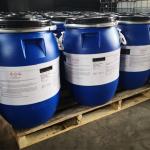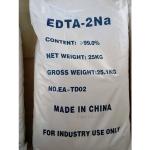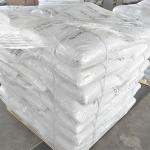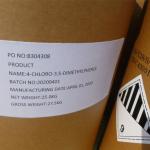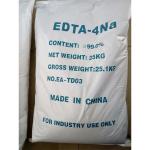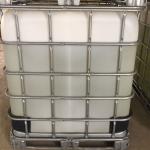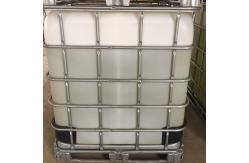A Leading Heavy Metal Chelator for Environmental Protection
Potassium Dimethyl Dithiocarbamate (KDD) Molecular Formula: C₃H₆NS₂K · 2H₂O
Molecular Weight: 195
CAS No.: 128-03-0 Product Details:- Appearance: Clear green liquid with an ammonia-like odor.
- Purity: ≥ 50%
- Alkalinity (as KOH): 0.04% - 0.15%
- pH: 11.5 - 14
- Specific Gravity: 1.2
Key Features & Characteristics:High Chelating Efficiency: Potassium Dimethyl Dithiocarbamate (KDD)
is a powerful chelator for heavy metals, effectively binding with
metal ions to prevent them from causing contamination or toxic
effects. Appearance & Odor: The product is a clear green liquid, often
characterized by its distinct ammonia odor, which is typical for
dithiocarbamate compounds. High Alkalinity: The product has a high pH range (11.5 - 14),
indicating its strong alkaline nature, which can be important in
various chemical processes and treatment applications. Versatile Applications: KDD is widely used in heavy metal removal,
especially in water treatment, mining, and industrial processes,
where it can act as an effective agent for metal ion sequestration. Specific Gravity: The density of 1.2 means that it is relatively
dense compared to water, a characteristic that may influence its
handling and mixing in aqueous solutions.
Applications:- Heavy Metal Chelation: KDD is primarily used to capture and
sequester heavy metals such as copper, lead, mercury, and cadmium,
preventing environmental pollution.
- Water Treatment: It's often employed in water treatment plants to
remove toxic metal ions from wastewater before discharge.
- Agriculture & Soil Remediation: KDD can be used to detoxify
soils contaminated with heavy metals and improve agricultural
practices.
- Mining and Metal Processing: Used in the mining industry for the
selective extraction of metals and reducing the impact of mining
waste.
Handling and Safety:- Protective Measures: Due to its high pH and ammonia odor, proper
personal protective equipment (PPE) should be used when handling
KDD, including gloves and eye protection.
- Storage: Store in a cool, dry place away from direct sunlight and
incompatible materials to ensure stability and safety.
|
